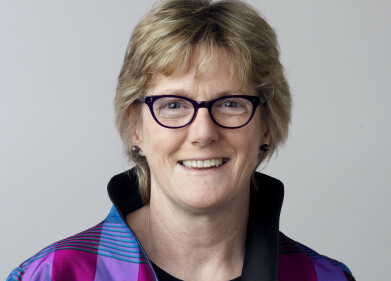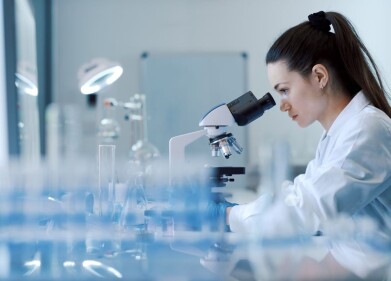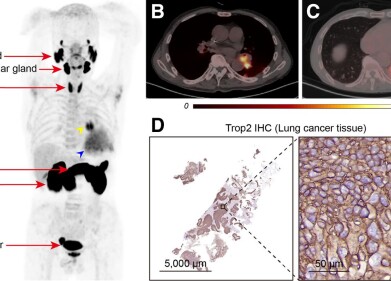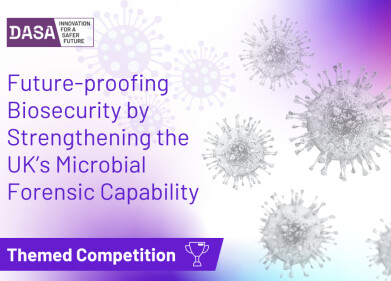-
 Data was collected from beamlines 12, 124 and 104 to build the structural model of the protective armour around C.difficile
Data was collected from beamlines 12, 124 and 104 to build the structural model of the protective armour around C.difficile -
 Image of C.diff armour by Dr Lizah van der Aart (Credit: Newcastle University, UK)
Image of C.diff armour by Dr Lizah van der Aart (Credit: Newcastle University, UK)
News & views
Diamond Synchrotron helps reveal Protective Shield of Superbug
Feb 25 2022
A team of scientists from Newcastle, Sheffield and Glasgow Universities have revealed, for the first time, the structure of the protective armour surrounding the superbug C.dIfficile, a close knit flexible layer resembling chainmail, which while preventing molecules from getting in, also provides a new target for drug development. Dr Paula Salgado, Senior Lecturer in Macromolecular Crystallography, who led the research at Newcastle University said “Excitingly, this opens the possibility of developing drugs that target the interactions that make up the chainmail. If we break these, we can create holes that allow drugs and immune system molecules to enter the cell and kill it.”
Together with colleagues from Imperial College and Diamond Light Source, the team was able to outline the structure of the main protein, SlpA, that forms the links of the chainmail and how they are arranged to form a pattern and create this flexible armour.
Corresponding author, Dr Salgado, added: “I started working on this structure more than 10 years ago, it’s been a long, hard journey but we got some really exciting results! Surprisingly, we found that the protein forming the outer layer, SlpA, packs very tightly, with very narrow openings that allow very few molecules to enter the cells. S-layer from other bacteria studied so far tend to have wider gaps, allowing bigger molecules to penetrate. This may explain the success of C. diff at defending itself.”
The team determined the structure of the proteins and how they are arranged using a combination of X-ray and electron crystallography. Making a natural 2D array crystallise as a 3D crystal was not easy and the crystals had many problems. Dr Salgado explained; “Even when crystals were obtained, not all diffracted well so the Diamond synchrotron was essential for the success of the project. The work relied particularly on I24, the microfocus beamline, to test many hundreds of crystals and screen for the best spot in the best crystal to collect the best data set. Getting native data was not the end of the story as there were no models to allow structure determination. Staff across the MX beamlines at Diamond were always eager to help solve this problem and willing to try new approaches and accommodate requests for specialised beamtime. But the crucial experiment was using the unique long wavelength I23 beamline, which allowed using the native sulphur atoms in SlpA as sources of information required to start building a model. “
The data collected on I23 allowed Senior Beamline Scientist Dr Kamel El Omari to find the positions of the sulphur atoms and generate an initial partial model. This was the starting point that, together with higher resolution data collected at I24 and I04 beamlines at Diamond, allowed Dr Salgado and her team to build the full SlpA structure.
Dr El Omari said: “It was a pleasure to be part of this long standing and exciting project. It is a nice example showing how collaborations and access to state-of-the-art facilities like Diamond Light Source are successfully supporting the scientific community.”
So-called superbugs have multiple ways to resist antibiotics and can combine multiple resistance mechanisms. C. diff, is a superbug that infects the human gut and is resistant to all but three current drugs. Not only that, but it becomes a problem when antibiotics are taken, as the good bacteria in the gut are killed alongside those causing an infection. As C. diff is resistant, it can grow and cause diseases ranging from diarrhoea to death due to massive lesions in the gut. Another problem is the fact that the only way to treat C.diff is to take more antibiotics, so the cycle is restarted and many people get repeat infections.Determining the structure allows the possibility of designing C. diff-specific drugs to break the S-layer, the chainmail, and fight infections.
From Dr Salgado’s team at Newcastle University, PhD student Paola Lanzoni-Mangutchi and Dr Anna Barwinska-Sendra unravelled the structural and functional details of the building blocks and determined the overall X-ray crystal structure of SlpA. Paola said: “This has been a challenging project and we spent many hours together, culturing the difficult bug and collecting X-ray data at the Diamond Light Source synchrotron.”
Dr Barwinska-Sendra added: “Working together was key to our success, it is very exciting to be part of this team and to be able to finally share our work.”
Dr Rob Fagan and Professor Per Bullough’s teams at the University of Sheffield carried out the electron crystallography work. Dr
Fagan said: “We’re now looking at how our findings could be used to find new ways to treat C. diff infections such as using bacteriophages to attach to and kill C. diff cells - a promising potential alternative to traditional antibiotic drugs.”
The work is illustrated in a stunning image by Newcastle-based science Artist and Science Communicator, Dr. Lizah van der Aart.
Reference
Structure and assembly of the S-layer in C. difficile. P. Lanzoni-Mangutchi et al. Nature Comms. Doi: 10.1038/s41467-022-28196-w
The paper is published in Nature Communications (www.nature.com/articles/s41467-022-28196-w)
More information online
Digital Edition
Lab Asia 31.6 Dec 2024
December 2024
Chromatography Articles - Sustainable chromatography: Embracing software for greener methods Mass Spectrometry & Spectroscopy Articles - Solving industry challenges for phosphorus containi...
View all digital editions
Events
Jan 22 2025 Tokyo, Japan
Jan 22 2025 Birmingham, UK
Jan 25 2025 San Diego, CA, USA
Jan 27 2025 Dubai, UAE
Jan 29 2025 Tokyo, Japan


















